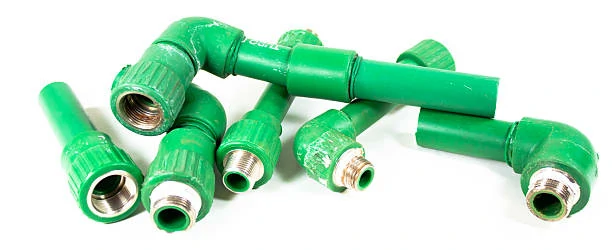The PPR pipes market in India has experienced substantial growth in recent years. The demand for them is soaring in various sectors, including plumbing, water supply, agriculture, and construction. They offer remarkable durability, ease of installation, and resistance to corrosion, making them the preferred choice for residential and industrial plumbing systems across India.
In this article, we will explore the PPR pipes market in India in detail. We will examine key market trends, growth drivers, challenges, opportunities, and competitive dynamics. Additionally, we will look at the future of the PPR pipes market and analyze how industry leaders are navigating the current market landscape.
Introduction
PPR pipes (Polypropylene Random Copolymer) are a robust and cost-effective solution for water distribution, plumbing, and heating systems. These pipes feature excellent resistance to high temperatures, pressure, and chemical corrosion, making them ideal for both hot and cold water supply systems.
Manufacturers produce them using polypropylene, a material that boasts superior mechanical properties, high resistance to corrosion, and an extended service life of up to 50 years with minimal maintenance. PPR pipes are durable, and fusion welding technology ensures leak-proof, strong joints, enhancing the reliability of plumbing systems.
Market Overview
India’s plumbing and piping industry has seen rapid growth due to increasing urbanization, rising demand for water supply infrastructure, and advancements in construction technologies. The market has become an integral part of this expansion, driven by its application in both residential and industrial systems.
Market Size and Growth
The market in India is projected to grow at a compound annual growth rate (CAGR) of 8-10% over the next five years. The growth comes as a result of factors like government investments in water infrastructure, urbanization, and the growing awareness of water conservation.
Government initiatives like the Atal Mission for Rejuvenation and Urban Transformation (AMRUT) and Swachh Bharat Abhiyan have propelled the adoption of them for both urban and rural water supply systems. These projects aim to provide reliable water distribution, sewage systems, and improved sanitation, which have directly contributed to the demand for them.
Key Drivers of Market Growth
- Urbanization: India’s urban population is growing rapidly, increasing the demand for reliable plumbing and water supply systems. New urban developments often rely on them for their durability and long lifespan.
- Government Support: The Indian government’s infrastructure development policies, such as the Smart Cities Mission, Atal Mission, and other initiatives, heavily promote the adoption of modern and durable piping solutions like them. These initiatives ensure that the demand for them remains strong.
- Water Conservation Awareness: With increasing awareness of water conservation, both residential and commercial consumers are turning to long-lasting, corrosion-resistant materials for plumbing. PPR pipes provide a sustainable and reliable option for water distribution systems.
- Growth in Real Estate: The booming real estate sector in India contributes to a steady demand for high-quality plumbing materials. PPR pipes are increasingly used in residential complexes, commercial buildings, and industrial units due to their superior performance.
- Environmentally Friendly Solutions: PPR pipes are eco-friendly due to their long lifespan, energy-efficient manufacturing process, and recyclability. As sustainability becomes a priority, the demand for them continues to grow.
Challenges in the PPR Pipes Market
Despite strong growth, the PPR pipes market in India faces a few challenges that could hinder its further expansion.
- High Initial Costs: PPR pipes may come with a higher upfront cost compared to materials like PVC and HDPE, which could deter cost-sensitive customers, especially in rural areas or low-budget projects.
- Limited Awareness in Rural Areas: In rural regions, there remains limited awareness regarding the benefits of them. A lack of knowledge about their advantages means that adoption in these areas may take longer.
- Competition from Alternative Materials: Materials like PVC, CPVC, and HDPE pipes also enjoy widespread usage in India. These options sometimes present lower initial costs or cater to specific applications, making them direct competitors to them.
- Dependence on Imported Raw Materials: A significant portion of the raw materials needed to produce PPR pipes comes from imports, making the industry vulnerable to fluctuations in the global supply chain and material prices.

Opportunities in the PPR Pipes Market
- Government Infrastructure Projects: India’s government continues to prioritize infrastructure development, especially in water supply and sanitation. These projects create ample opportunities for the market as the government pushes for the adoption of modern piping solutions.
- Industrial Applications: The demand for them in industrial applications is growing, especially in sectors such as chemicals, food processing, and irrigation. The high resistance of them to corrosion, pressure, and temperature makes them ideal for these industries.
- Sustainability Focus: With a growing emphasis on sustainable solutions, they are gaining traction as an eco-friendly option. Their long lifespan, recyclability, and minimal maintenance needs make them attractive to environmentally conscious consumers.
- Rising Middle-Class Income: As India’s middle class expands, people increasingly opt for high-quality plumbing systems. PPR pipes, with their durability and cost-effectiveness in the long run, become an appealing choice for these consumers.
- Technological Advancements: Advances in them production technology, such as improved fusion techniques and more efficient manufacturing processes, will help reduce costs and improve product quality. These innovations can enhance the competitive edge of them.
Competitive Landscape
The PPR pipes market in India features a mix of local and international players. Key manufacturers include:
- Supreme Industries
- Finolex Industries
- Astral Pipes
- Prince Pipes and Fittings
- Jain Irrigation Systems
- Ashirvad Pipes
These companies have invested heavily in increasing production capacity, improving product quality, and enhancing customer service. The market remains competitive, with players continuously exploring new value-added services, such as better installation support and extended warranties.
Regional Dynamics
The demand for PPR pipes varies across India, with specific regions exhibiting higher growth due to their urbanization and infrastructure needs.
- Maharashtra: As one of India’s most industrialized states, Maharashtra has a significant demand for them, particularly in cities like Mumbai, Pune, and Nashik.
- Uttar Pradesh: The growing urbanization and infrastructure development in Uttar Pradesh contribute to a rising demand for PPR pipes in both residential and commercial projects.
- Tamil Nadu: With a thriving construction industry in Chennai and Coimbatore, Tamil Nadu remains a major market for them.
Future Outlook of the PPR Pipes Market in India
The PPR pipes market in India is expected to continue its upward trajectory. Urbanization, government infrastructure projects, and a growing awareness of the benefits of sustainable plumbing solutions will likely fuel the demand for them in both residential and industrial applications.
The market’s future growth will depend on how companies adapt to evolving consumer needs and industry trends. Innovations in manufacturing processes, cost reductions, and enhanced product offerings will play a pivotal role in shaping the market dynamics.
FAQ
1. What are the advantages of using them in plumbing systems?
PPR pipes provide high durability, resistance to corrosion, and excellent performance under high temperatures and pressure. Their fusion welding technology ensures strong, leak-proof joints.
2. How fast is the PPR pipes market growing in India?
The PPR pipes market in India is growing at a CAGR of 8-10%, driven by urbanization, infrastructure development, and increased awareness about sustainable plumbing solutions.
3. Are PPR pipes suitable for both residential and industrial applications?
Yes, PPR pipes are highly versatile and find use in both residential and industrial plumbing systems. They are particularly suited for chemical transportation and irrigation in industrial sectors.
4. What challenges does the PPR pipes market face in India?
Challenges include high initial costs, limited awareness in rural areas, competition from alternative materials like PVC, and dependency on imported raw materials.
5. What opportunities exist for growth in the PPR pipes market?
Key opportunities include government infrastructure projects, rising industrial demand, a focus on sustainability, and innovations in PPR pipes manufacturing technology.


















